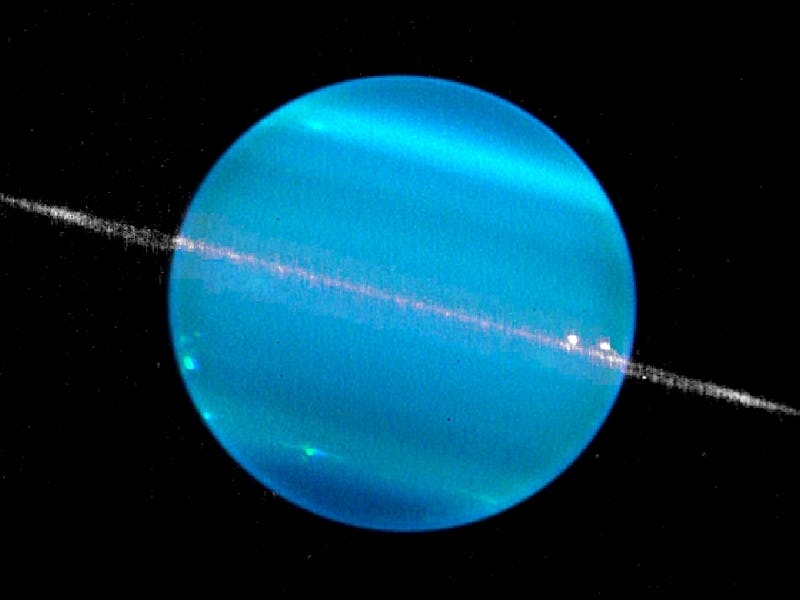Diamonds Are Raining All Over Uranus (Also Neptune)
Powerful X-ray lasers recreate hellish conditions deep within gas planets.

He had almost reached the center of the planet, but Jupiter had one more surprise in store,” Arthur C. Clarke wrote in his novel 2010: Odyssey Two. “There, by one of Nature’s supreme jests, was something very precious to mankind. The core of Jupiter, forever beyond human reach, was a diamond as big as the Earth.”
The colossal diamond Clarke imagined at Jupiter’s center was the result of unimaginable pressure. Carbon atoms had split off in chemical reactions and drifted downward to the core, where they were crushed and crystallized into one solid, perfect diamond.
We don’t really know if Clarke was right — he had to have a godlike super-being make the trip to Jupiter’s core to find out. But the basic science he described was sound, and an international team of researchers believe similar processes are going on within two of the solar system’s other giants. It’s raining diamonds on Uranus and Neptune.
As the team wrote this week in the journal Nature Astronomy, both of the solar system’s ice giants contain tons of methane in their atmospheres. Methane molecules contain four hydrogen atoms and one carbon atom, which can be split apart if the pressure is significantly fierce — like, say, deep within a giant planet. Those carbon atoms then get compressed into diamonds, which then rain down inside Uranus’s and Neptune’s interiors.
The researchers used the mighty X-ray laser at the Stanford Linear Accelerator Center in California to replicate the kind of conditions necessary for such remarkable chemical processes to occur. The pressure would need to be 1.5 million times that of Earth’s atmosphere, and the temperature would have to be about 8,500 degrees Fahrenheit.
Hellish as that might seem, you can find conditions like that 6,000 miles into Uranus or Neptune. That sounds deep, but there’s still another 10,000 miles to go before you reach the core. The diamonds aren’t big to begin with, measuring only a billionth of a meter. The researchers theorize they then sink to the planet’s center over thousands of years. Maybe Clarke really was onto something with his vision of a gas giant’s diamond core.